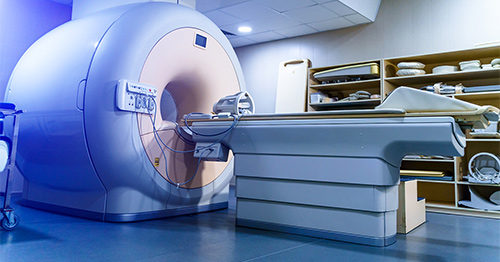An MRI, or Magnetic Resonance Imaging, is operated by the fundamentals of chemistry. To understand how chemistry associates with an MRI, you need to know how an MRI works.

A MRI works this way:
MRIs are based mostly by creating magnetic waves to manipulate protons. Both waves and atomic structures are important parts of chemistry, and are the basics to learning about chemistry. If the technology to create magnetic waves strong enough to alter the position of protons did not exist, neither would MRIs, and many health issues like cancer would be much harder to detect.